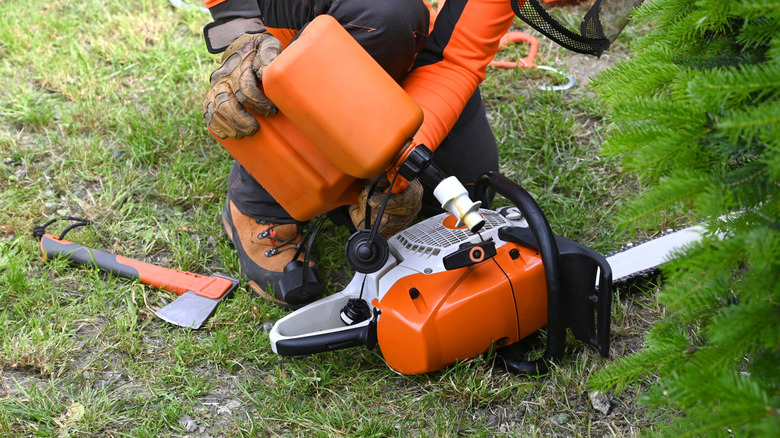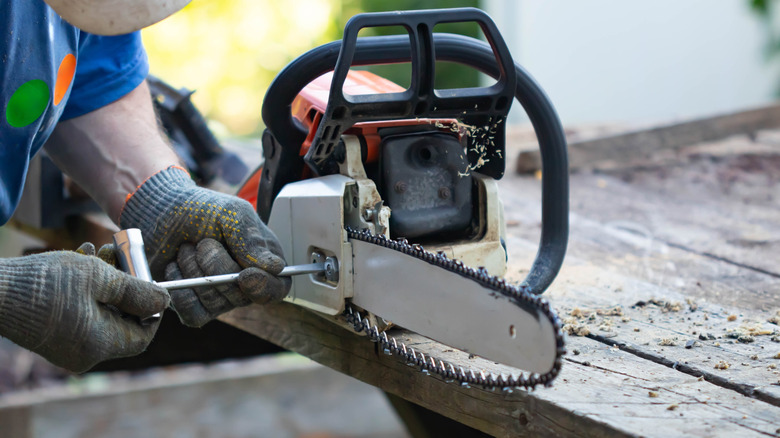Can You Use Premium Gas In A Chainsaw? Here's What Happens If You Do
With its ability to cut and shear through wood, the chainsaw is one of the most important power tools ever invented. Its power and efficiency remain unmatched, with different sizes, configurations, and power sources developed by the major chainsaw brands for differing needs. Gas-powered chainsaws provide greater output than electric ones because of their higher horsepower engine, which normally uses lower-octane fuel but can also employ premium gasoline with no issue.
Given the unpredictable ruggedness of wood, chainsaw engines need to be high-performance powerplants. This requires a minimum of 89 octane-rated gasoline to ensure optimum performance and avoid engine damage. Additionally, while higher octane gasoline, like those rated 91 or 93, won't cause any problems for the chainsaw, it will also not benefit the tool in terms of added horsepower or performance gain.
Octane is not an indicator of a fuel's power level but rather rates its stability during combustion. The types of engines that would benefit from using high-octane fuel are those with advanced ignition systems or turbo features. Chainsaw engines, on the other hand, are normally two-stroke designs. Unlike car engines, lubrication doesn't happen through the crankcase, instead requiring a mix of gasoline and oil to lubricate its internal components.
Use correct fuel for better performance
The fuel risk for chainsaw engines is when a lower octane than what is specified is used, with some advising against using 87 octane. Lower octane gasoline can cause irregular fuel detonation or knocking within the engine, which can affect lubrication and diminish engine performance. Left untreated, engine knock can damage various engine components, including the pistons, cylinder heads, and spark plugs.
To ensure optimal performance and avoid damage, correct chainsaw refueling practices must be observed. This includes always using fresh fuel to avoid obstructing the filter or carburator. Additionally, it is vital to use the proper fuel mixture, which most manufacturers recommend is 50 parts of gasoline to one part of oil. although this can vary. Chainsaws must be refueled in an open area away from sources of ignition, and using the gas canister spout or funnel to avoid spillage.
Gasoline chainsaws possess superior performance but require refueling, as well as regular and proper maintenance, to prolong its life. An alternative to gas-powered chainsaws is the lighter and less bulky electric variation, which, while less complicated to use, has its fair share of pros and cons to know of before buying.

